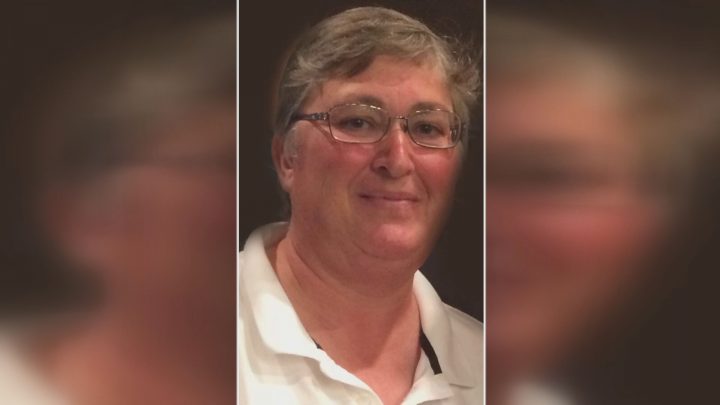During a visit to Vancouver, Greg Fertuck laughed as he told an undercover police officer how his estranged wife Sheree Fertuck went missing, a Saskatoon murder trial has heard.

The accused, now 68, was explaining to the officer — whom he thought was a coworker — how he was arrested in October 2017. Fertuck was detained and interrogated by Saskatoon RCMP, but not charged.
“I was supposed to get charged with murder, but they didn’t make nothing stick,” Fertuck can be heard saying on an audio recording.
It was the first time during a nearly year-long Mr. Big sting that Fertuck told his coworker that Sheree went missing. She was last seen by family on Dec. 7, 2015, as she left a farmyard near Kenaston, Sask., which is 85 kilometres south of Saskatoon.
He disclosed the information while riding in a vehicle in April 2019 with an undercover officer, who can’t be identified by media due to a publication ban.
Sheree was Fertuck’s second wife.
“I didn’t get divorced the second time. She disappeared,” the man said with a laugh.
The men were working in what Fertuck thought was a two-pronged operation. One side of the business was supposed to be a legitimate vehicle-hauling service, while the other was a criminal effort collecting loans, transporting illegal diamonds and moving other contraband.
In reality, the entire organization was created by the RCMP, using undercover officers to pose as employees. The goal was to find the truth about Sheree going missing, and her estranged husband had been a suspect dating back to December 2015, officers have testified.
Fertuck was the target of 130 controlled interactions, or “scenarios,” involving undercover police. The officer who was in Vancouver with Fertuck is called the “primary operator.”
One member of the fake criminal organization was known as a “cleanup guy” who took care of serious crimes for the group. During the conversation about Sheree’s disappearance, Fertuck laughed as he compared himself to him.
“No, I’m not like (the cleanup guy). I’m worse. They don’t find them,” he said.
On the stand Wednesday, the officer who was driving with Greg said he didn’t know the topic of Sheree’s disappearance would come up. He’d been instructed to not probe further into the issue if it did surface, court heard.
At that point, undercover officers had more scenarios planned leading up to a June 21, 2019, meeting between Fertuck and a fictitious crime boss.
In previous testimony, the operation’s cover person said Fertuck told the crime boss that he killed Sheree and disposed of her body. Fertuck mentioned a tarp, a pair of gloves, a .22 calibre rifle magazine and boots used during the offence, he testified.
Fertuck led officers to the gravel pit where he said the shooting happened. They also went to a nearby wooded area. Despite days of searching, Sheree’s body and the rifle have never been found.
None of the Crown’s evidence has been deemed admissible during the judge-alone trial. Instead, Justice Richard Danyliuk has heard six weeks of testimony in a voir dire, or admissibility hearing.
His voir dire decision is expected before the defence has an opportunity to call evidence of its own.
The trial is scheduled to last eight weeks.
The ‘alibi scenario’
In May 2019, undercover officers launched the ‘alibi scenario’ in Alberta. Fertuck and the primary operator were part of a group called to a hotel room. They met with one of the organization’s members, who had scratches on his face after an apparent fight with a girlfriend.
The cleanup guy was there, and collected the member’s cellphone. He instructed Fertuck and the primary operator to pick up several items.
Fertuck noted that the member’s DNA could be under the fingernails of the woman who scratched him.
In a subsequent scenario, Fertuck and the primary operator traveled to Lethbridge. Another employee in the organization gave them a police DNA collection kit and instructions on how to use it.
From there, the primary operator and Fertuck went to a hospital, meeting a supposedly terminally ill patient. As the patient sat in a wheelchair outside, Fertuck cut open a bag and collected blood from the patient’s finger.
During the exchange, members of the Lethbridge Police Service (LPS) pulled up at the hospital for an unrelated reason.
Court heard that when Fertuck noticed their arrival, he suggested that if they have any issues with the LPS, the criminals should claim to be undercover police officers.










Comments